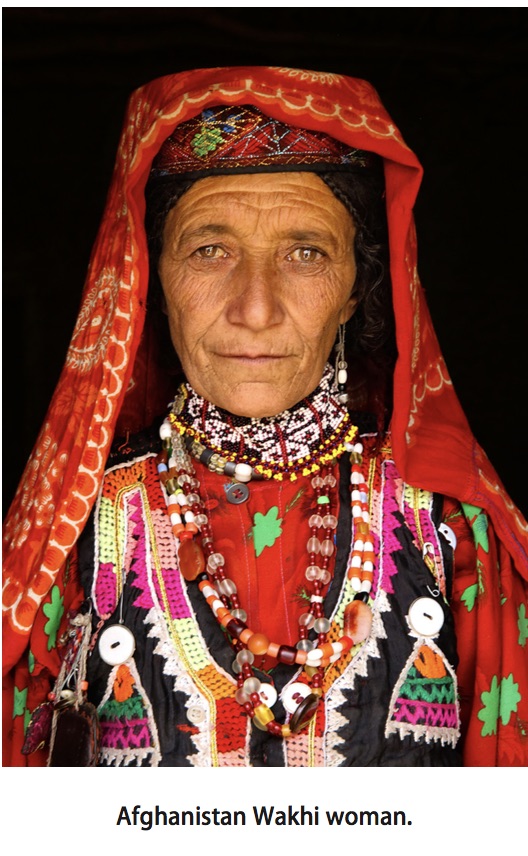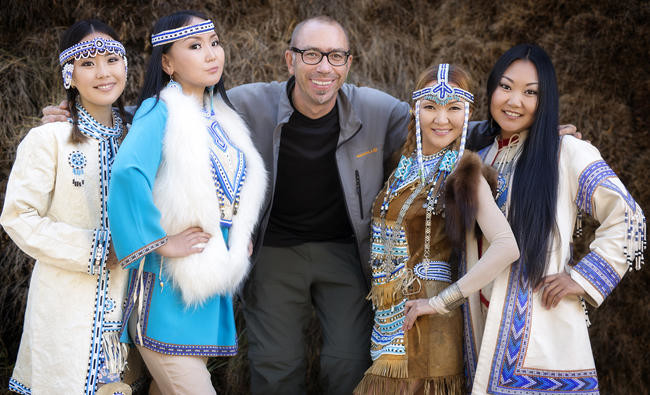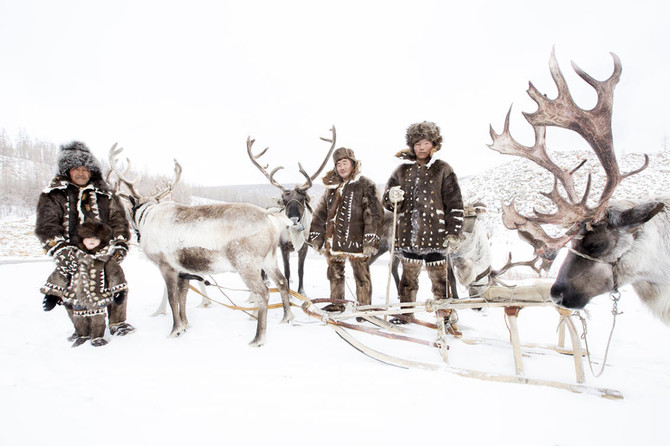Alexander Khimushin, who has spent much of his young career as a photographer tramping through countries that most people only see in National Geographic documentaries, knows what it means to not be welcomed.
On a trip through Africa, he stopped at a city to take photographs on a busy street. Somebody became suspicious, the police were called and his explanations for taking pictures were ignored. He spent five days in jail, had his photos deleted and was deported on the next plane out.
“I was detained without any reason just because I was photographing people on the street,” Khimushin told Arab News. “Local authorities kept me in the police station for five days, repeatedly questioning my reasons for coming into their country.”
Developing nations often have little truck with photographers since local authorities have experience only with photojournalists or people they consider spies. Khimushin, it just so happens, was in an area where photographers were either one or the other. He was in a place where few tourists ventured.
Khimushin is perhaps best known for his “The World in Faces” project, which focuses on portraiture of individuals from the 84 countries he has visited. He prefers close-ups of faces, which often convey the individual’s life story and place of origin in a single frame.
His work is not unlike Steve McCurry, who shot the iconic “Afghan Girl” for National Geographic, or Jimmy Nelson, well known for his portraits of tribal and indigenous people taken in more than 16 countries.
Whatever difficulties Khimushin finds himself in, he recognizes that is part of the job. There is an expectation of the unexpected. But the important thing is making sure that the work is preserved.
“I was expelled from the country without any apology or explanation and all of the photographs I had taken were deleted,” he said.
“But I managed to save a few photos.”
But for every incident of inhospitality, there is another of compassion and friendliness.
Traveling across Siberia in October 2016, Khimushin attempted to cross a raging river in his 4X4 and got stuck in the middle when ice floes damaged the vehicle. Stranded in freezing water, Khimushin was acutely aware that he could suffer from hyperthermia and die of exposure.
MORE PHOTOS: The World of Faces Gallery.
“My goal was to visit and photograph various indigenous people living on this vast territory,” he said. “I was on my way to Evenki people living in this cold and snowy region. Evenki are reindeer herders, who live deep in the Taiga forests, with no roads or civilization for miles. They are nomadic people and often migrate from place to place with their reindeer.”
The Evenki, also known as the Tungus, are a group of 30,000 or so traditional reindeer herders and pastoralists who live scattered across Siberia.
To get to the Evenki camp, Khimushin had to travel many kilometers along impassable roads and cross frozen rivers. As he pondered his fate in the river, the reindeer herders, who were waiting for him, realized that something had happened and sent a crew in an old Soviet military vehicle to search for him.
The herders rescued him, but he had to leave his vehicle behind. Without waterproof shoes or clothing, he crossed the waist-deep river and followed the herders in the snow to camp. Without the Evenki, he wouldn’t be shooting pictures today.
It can be a risky career, but the way Khimushin sees it, “photography is one tool for preserving indigenous cultures.”
“The World in Faces” project, Khimushin noted, “simply says that everyone is beautiful in their own way whether they are old, men, women or children.”
Khimushin’s portraits focus on the details of people’s faces and their traditional costumes. When it comes to the human profile the face allows the viewer to discover an entirely different world.
“Photography has always been my tool to express myself,” Khimushin said. “However, when I came to understand that, it was people who were the most interesting part of my journey, so I started taking portraits.”
To Khimushin, preserving cultures is a human duty toward one’s authenticity. His mission, as he sees it, is to record individuals’ loyalty to their culture. By doing so, it forces him to leave his comfort zone to engage in the sometimes high-risk pursuit of finding the perfect portrait to preserve those cultures.
“The world of people is amazing and incurably diverse but at the same time so fragile,” he said, noting that he has his own message of peace: “Let’s live peacefully in this world regardless of ethnicity, religion or culture.”
Unlike a journalist with pen and paper to take notes, a photographer with a camera, lenses and 10 kilos of paraphernalia can be intimidating to a subject. But for Khimushin, it is all about breaking the ice and having a bit of conversation before lifting the camera to the eye.
“It can be stressful, uncomfortable and frankly quite intimidating to take photos of people you don’t know,” he said, observing that he developed a technique to ease the tension.
“Be open, positive, genuine and respectful,” he said. “Never feel superior or inferior to anyone. Learn a little bit about traditional culture, a couple of words in local language and you can make a lot of friends and their photo portraits too.”
 There is a beautiful photograph by Khimushin of a young Oroqen girl in inner Mongolia wearing her traditional costume appearing so comfortable, happy, full of life and proud to represent her nationality, culture and tradition.
There is a beautiful photograph by Khimushin of a young Oroqen girl in inner Mongolia wearing her traditional costume appearing so comfortable, happy, full of life and proud to represent her nationality, culture and tradition.
Oroqens are one of the 56 ethnic groups officially recognized by the People’s Republic of China.
But it is also a disappearing culture. “I want to capture what is still there, faces and national costumes, because these people might not be around in the next generation,” said Khimushin.
He added, “I see many people are taking care of rare animals, but still they do not realize that there are human ethnic groups that are in the same situation.”
— Photos by Alexander Khimushin



























